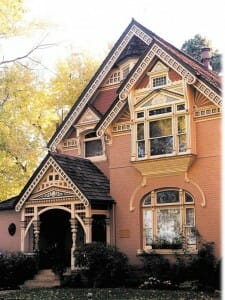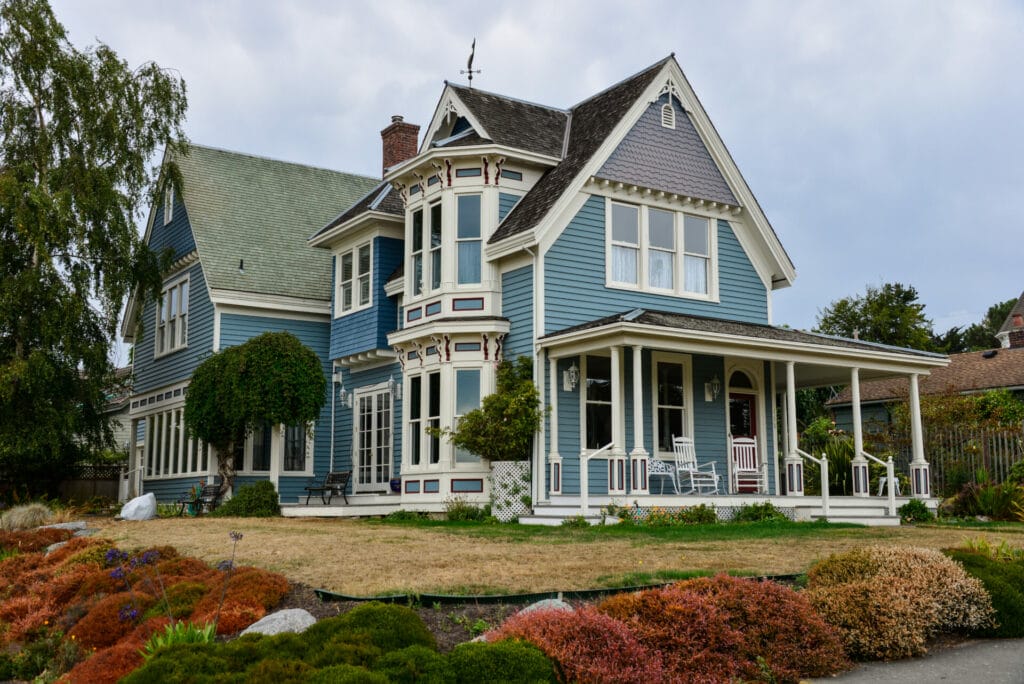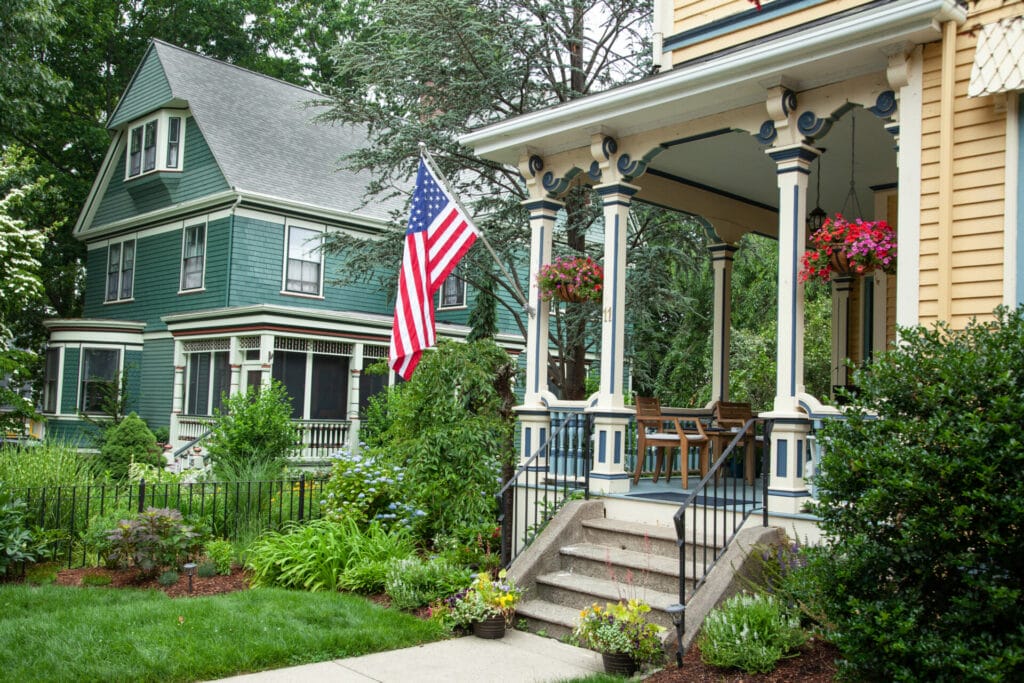
The allure of Victorian homes lies not just in their intricate architectural details but also in their historically rich color palettes. Contrary to the vibrant and often flamboyant hues seen in modern restorations, authentic Victorian home paint colors were significantly more subdued.
These residences, renowned for their elegance and detail, originally donned a range of earthy tones and muted shades. This introduction to Victorian color schemes sets the stage for a deep dive into the historical context that shaped the aesthetic of these timeless structures.
As we explore the original palettes of Victorian homes, we uncover a contrast between the authentic colors and the brighter hues now synonymous with contemporary Victorian restorations.
Victorian homeowners and designers drew a significant amount of inspiration from the natural environment surrounding them. The color schemes that adorned exterior paint on Victorian homes were deeply rooted in the landscape, with a preference for buffs, fawns, browns, ochres, and russets.
This connection to nature was more than an aesthetic choice; it was a reflection of a broader Victorian ethos that emphasized harmony with the environment. By selecting colors that blended seamlessly with natural landscapes, these homes achieved a sense of cohesion and serenity. It made the architecture feel like an extension of the natural world.

In Victorian architecture, every element was a canvas for showcasing craftsmanship and beauty, including the choice of paint color. Paint played a pivotal role in accentuating the elaborate architectural details for which Victorian houses are celebrated.
From highlighting the ornate trim work to underscoring the delicate cornices, the use of color was strategic and thoughtful. By employing a range of hues, Victorian designers were able to bring attention to the craftsmanship inherent in the architectural details. They added depth and dimension to the homes’ exteriors.
When embarking on the journey to restore a Victorian home to its original splendor, the selection of paint colors plays a pivotal role. Authenticity in color choice is crucial to capturing the essence of the Victorian era.
Fortunately, companies like Sherwin Williams offer an array of historically accurate exterior paints, providing homeowners with the tools needed to make informed decisions. These collections not only honor the architectural integrity of Victorian homes but also ensure that the chosen hues resonate with the period’s aesthetic values.

Painting a Victorian home is an art that requires a thoughtful approach to color schemes and detailing. To achieve a harmonious look that pays homage to the Victorian era, begin with the foundational colors, such as those for the roof and main body of the house. These foundational hues will serve as the backdrop for the intricate details that Victorian homes are known for.
Research the History of Your Home
To choose paint colors for a Victorian home, research its history and style. Use old photos or consult local historians. Knowing your home’s era will guide your color selection.
Consider the Architectural Details
Victorian homes are known for their intricate architectural details such as gingerbread trim, ornate carvings, and decorative moldings. These details should be highlighted with contrasting colors to create a visually striking effect. Consider using a darker hue for the trim and a lighter color for the main body of the house.
Choose Rich, Bold Colors
Victorian homes are not known for their subtlety. To truly capture the essence of this style, choose rich, bold colors that make a statement. Deep reds, vibrant greens, and royal blues were popular choices during the Victorian era and can still be seen on many historic homes today.
Play with Accent Colors
In addition to the main colors for your home’s exterior, don’t be afraid to play with accent colors. These can be used on window frames, shutters, doors, or decorative accents such as columns or balusters. Adding in these small pops of color will add depth and interest to your home
Restoring a Victorian home to its former glory is a delicate task that benefits greatly from the insight and expertise of professionals. A professional painting company, such as BCI, brings a wealth of knowledge in selecting and applying authentic Victorian paint colors.
With an understanding of historical accuracy and an eye for aesthetic detail, these experts can guide homeowners through the restoration process, ensuring that the final result is both historically accurate and visually stunning.
Planning to restore your Victorian home with authentic, historically accurate colors? Contact BCI today for expert guidance and professional painting services. Our team is dedicated to bringing the elegance and beauty of the Victorian era back to life, ensuring that your home shines with its original splendor.